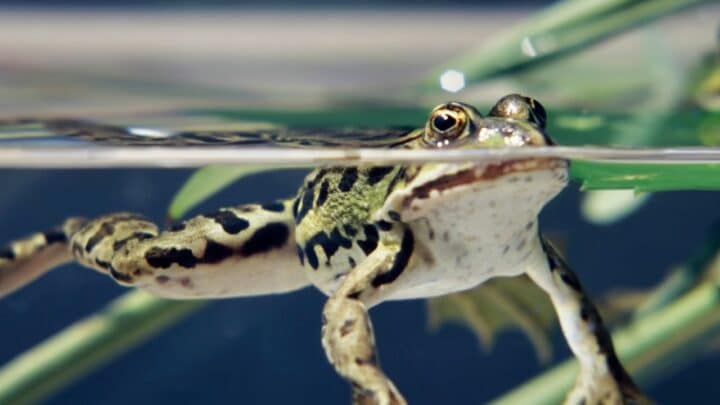Frogs are fascinating amphibians that can thrive both on land and in water, thanks to their unique respiratory adaptations. Ever wondered how long a frog can stay submerged underwater? This article explores their remarkable ability to hold their breath, breaking down the science behind it.

Quick Answer: Most frogs can hold their breath for several hours, with some species capable of staying submerged for an entire day.
Frogs utilize two primary methods for absorbing oxygen underwater: cutaneous gas exchange and buccal pumping.
| Method | Description | Example |
|---|---|---|
| Cutaneous Gas Exchange | Frogs breathe through their skin, which absorbs oxygen directly from water into blood vessels beneath. | American bullfrogs (Lithobates catesbeianus) maximize oxygen absorption with thin, vascular skin. |
| Buccal Pumping | Frogs use mouth and throat movements to draw oxygenated water over the moist lining inside their mouths. | Bullfrogs supplement up to 60% of their oxygen needs through buccal pumping (DeJongh & Gans, 1969). |
Frog skin is permeable, allowing oxygen to pass directly through membranes into blood vessels. Some frogs can derive up to 40% of their oxygen intake through this method (Wells, 2007). This is further enhanced by:
Thinner skin layers: Found in aquatic frogs like bullfrogs.
Periodic shedding: A fresh layer of skin maximizes oxygen absorption efficiency (Duellman & Trueb, 1994).
By expanding their throat muscles, frogs create a flow of water across oxygen-absorbing surfaces inside their mouths. This rhythmic action enables frogs to supplement oxygen levels without needing to surface.
Several factors determine how long a frog can stay underwater:
| Factor | Impact on Breath-Holding Ability |
|---|---|
| Species | Aquatic species like the African clawed frog can hold their breath for longer compared to terrestrial frogs. |
| Water Temperature | Colder temperatures slow metabolism, extending submersion time. Warmer temperatures increase oxygen consumption. |
| Activity Level | Inactive frogs hold their breath longer. Movement accelerates oxygen depletion, reducing submersion time. |
Different frog species vary greatly in their ability to remain underwater:
| Frog Species | Maximum Submersion Time |
|---|---|
| African clawed frog | Up to 210 minutes |
| Northern leopard frog | 15–25 minutes (typical) |
| Wood frog | 15–25 minutes (typical) |
Frogs in colder water can hold their breath much longer than those in warmer conditions. For instance:
Leopard frogs can remain submerged for 300 minutes in near-freezing water but only 25 minutes at 20°C (68°F).
Colder water slows metabolism, conserving oxygen reserves.
Frogs that remain still use less oxygen compared to active frogs.
Example: Northern leopard frogs hold their breath for 170 minutes when inactive but only 85 minutes when moderately active.
Stores water in its body to survive years of drought.
Can remain dormant in burrows for up to seven years, using moisture-retaining skin adaptations.
Known for its unique reproductive process: females carry eggs in their back skin, where tadpoles develop until hatching.
This adaptation allows survival in arid environments.
| Adaptation | Description |
|---|---|
| Webbed Feet | Provides efficient propulsion underwater. |
| Waterproof Skin | Natural oils repel water, maintaining insulation and preventing waterlogging. |
| Dense Bones | Acts as ballast, aiding smooth submersion. |
| Large Surface Area | Greater respiratory surface area in skin and lungs increases oxygen absorption. |
Webbed feet create surface area to propel frogs through water efficiently. For instance, ducks and frogs share similar webbed structures for swimming.
Species like loons and frogs have dense bones and streamlined bodies for efficient underwater movement. Loons, for example, dive up to 180 feet, demonstrating the evolutionary overlap in aquatic adaptations.
Frogs possess extraordinary respiratory systems, including cutaneous gas exchange and buccal pumping, allowing them to stay submerged for hours or even days. These adaptations showcase the incredible flexibility of amphibians to thrive in both aquatic and terrestrial habitats. By understanding these mechanisms, we can better appreciate the evolutionary marvels that enable frogs to straddle two worlds seamlessly.
animal tags: Frogs
We created this article in conjunction with AI technology, then made sure it was fact-checked and edited by a Animals Top editor.